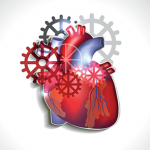The vast majority of the time the system works. Physicians switch roles with aplomb and, like Superman, go into a phone booth or locker room and emerge a different person. Is it possible that the warm, caring doctor who thoughtfully answers patents’ questions is actually the same person as the nasty and autocratic surgeon who barks at nurses and recklessly flings instruments all over the operating room?
Occasionally, however, the physician forgets to whom he is talking. I heard recently from a colleague how a physician said to a man, “Your wife’s brain is turning to mush,” when describing an MRI that showed Alzheimer’s disease.
Consult All Experts for Guidelines
Our own specialty has recently experienced such errant behavior, although—in this case—the matter concerned team play and the failure of some of the participants to realize that they were not free agents operating on their own in a vacuum. As many of you know, the American Heart Association published an article in the journal Circulation on recommendations for the use of nonsteroidal anti-inflammatory drugs (NSAIDs) to treat musculoskeletal pain.1 Cardiologists are terrific doctors. They can do magic with their catheters and, as someone whose most difficult procedure is to put a needle into a swollen joint, I have the highest regard for a anyone who, while sweating in a vest of lead, can snake a catheter through the clogged ostium of a coronary artery and gingerly place a stent so that blood will once again flow. If I ever have chest pain, I promise I will submit to your ministrations without complaint or questioning.
While I marvel at the skill of cardiologists, I have to say that arthritis is not angina. While rheumatology may involve brains more than brawn, the care of patients in our specialty is a very intricate undertaking, full of twists, turns, and balancing acts of the first order. As we have discussed in previous issues of The Rheumatologist, as medicine has advanced and patients have grown older, complexity has risen astronomically. There are no simple solutions anymore and the days of “one disease, one drug” are long gone.
The only defense against complexity is teamwork and the recognition that we are all together in the struggle against disease. The practice of medicine today necessitates teamwork that must be ever stronger and more effective. Otherwise, we do our patients a great disservice.

